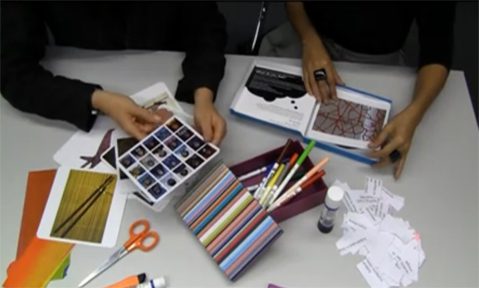
Each month Iniva Creative Learning post some handy tips for using the images on our Emotional Learning Cards in a variety of settings and circumstances. This month we focus on a practical exercise for using the cards as a means to better understand our emotions.
Often our difficulty around positively dealing with emotions stems from our inability to recognise them in the first place. Contemporary art contains an almost unlimited range of unusual and emotive images. As such they can help us to articulate and visualise our emotional responses.
Create your own Emotional Learning Card
- Start by looking through a number of different Cards. Discuss the imagery within the Cards and think about what emotions the images evoke.
- What is it about the image that suggests the emotion? Think about the colours used in the image, the placing of bodies and/or objects. Is there a story or a situation that the image suggests which evokes the particular emotional response?
- Leading on from the discussion, it’s time to create your own Emotional Learning Card. Decide on an emotion you want to represent. This decision may be governed by your particular situation (i.e. if there is an issue with anger management you might decide to explore anger as an emotion).
- Cut out a coloured card the same size and shape as an Emotional Learning Card. Thinking back to the discussion you had around the Cards decide how to visually represent the chosen image. Will it be through collage, drawing and/or painting? Will it be representative or metaphorical, realistic or surreal? You may want to write text or use lyrics from a song or a poem, either embedded within the image or written on the back of each card.
In making the card you have in effect “created” a representation” of that particular emotion. The young adult will have been given the freedom, in a positive, safe and creative environment to explore and examine the emotion and so will be able to recognise and better respond to it in the future. During the activity you will no doubt be in conversation with the young adult. Take advantage of this, asking questions and prompting them to articulate their responses through words as much as through the image-making.
Once the image is complete its important that it is kept and treasured- throwing it away will not send out a good message! You may want to put it in a scrap book or hang it on a wall and you may want to refer back to it at some point in the future.
You can buy our Emotional Learning Cards on our website, as well as download free resources that give suggestions for other practical activity. Visit our Store